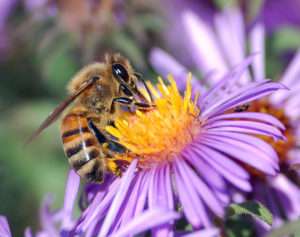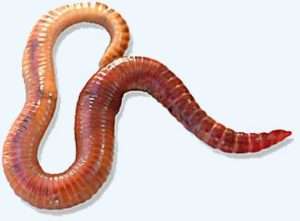There are some species found here in North America that are so common that many people just assume they’re part of the native menagerie. They’re naturalized, which means they’re non-native but have managed to establish reproducing populations here. Some may also be considered invasive, in that they aggressively compete with native species and may even displace them in some places.
I know some of you readers will already be familiar with the fact that the following species aren’t native here. But I bet there’ll be surprises for the rest of you! Let’s see who our not-actually-natives are.
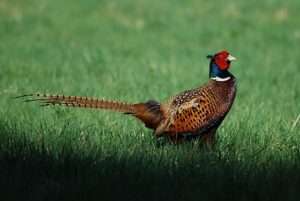 Ring-necked Pheasant (Phasianus colchicus)
Ring-necked Pheasant (Phasianus colchicus)
Hunters across the continent have long hunted pheasants for the table. First introduced in 1773–exactly 250 years ago–they have since made themselves at home in fields and meadows. While the largest populations can be found in the Midwest, especially the Great Plains states, they can be found throughout the United States, with additional scattered populations in southern Canada and Mexico.
While sometimes assumed to have integrated into their introduced habitats, pheasants actually wreak havoc on native game birds like quail and grouse. They compete for suitable food and nest sites, and may also practice nest parasitism, laying their eggs in other birds’ nests. This competition has led to decreases in native bird populations, as has the spreading of diseases that the pheasants tolerate, but which decimate other species. Pheasants will even attack and kill other birds.
Cross Orb Weaver (Araneus diadematus)
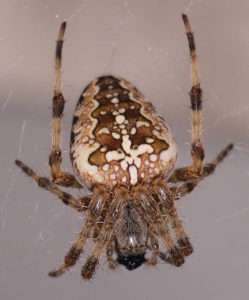 Fall is cross orb weaver time, and I run into these spiders constantly–sometimes literally, depending on how inconveniently their webs are placed! By that time of year, they’ve grown large enough to be noticeable, and their orange and brown coloration looks rather festive.
Fall is cross orb weaver time, and I run into these spiders constantly–sometimes literally, depending on how inconveniently their webs are placed! By that time of year, they’ve grown large enough to be noticeable, and their orange and brown coloration looks rather festive.
While I haven’t been able to find any indication that these spiders have a deleterious effect on their introduced ecosystems, they likely put at least some pressure on local invertebrate populations, whether as predators or competitors for prey species. This may become more pronounced as continued overuse of pesticides and habitat loss contribute to the invertebrate apocalypse.
“Save the bees!” has been an increasingly common headline since Colony Collapse Disorder first became widely known among the general public almost twenty years ago. What the articles rarely mention is that the honey bee is actually a domesticated insect that originated from wild stock in Europe. In fact, the true wild honey bee may be close to extinction, another victim of its domesticated descendants.
In fact, honey bees cause the decline of wild bee species wherever they are introduced. Not only do they compete with wild bees for food and nest sites, but they also spread diseases and parasites to these other species, some of which have become quite scarce. Moreover, honey bees are less effective at pollinating native plants outside their own range, and these species are at risk of extinction if their native pollinators are out-competed.
Another invertebrate beloved of gardeners here, the earthworms actually consist of a mix of both native and non-native species. Unfortunately, many native earthworms went extinct during the last Ice Age, so if your area has a recent glacial history it’s likely that the worms in your garden are invasive. (That does include the red wigglers (Eisenia fetida) commonly used for vermicomposting.)
What damage can a bunch of worms do? Plenty, as it turns out. They speed up decay and mix up nutrients in the soil in ways that many North American ecosystems aren’t used to. This changes physical characteristics of the soil like pH, texture, and density, as well as distribution of nutrients. Some young plants may not be able to reach nutrients that worms have moved deeper underground. So while you may thank earthworms for aerating the soil in your garden, they’re more of a problem for a lot of native ecosystems here.
“Drifting along with the tumbling tumbleweeds,” sang the Sons of the Pioneers in 1934, though tumbleweeds have been associated with the American West for much longer. Several species of plant dry out, snap off the root system, and roll along the ground spreading the mature seeds. The best-known species is the Eurasian Kali tragus, though there are other species that have been introduced here.
Because these plants take up a lot of physical space, they can crowd out native plants, especially those that are not shade-tolerant. Their seed distribution method means that one plant can spread its descendants many miles from where it originated. Moreover, the masses of dead, dry tumbleweeds can build up and become wildfire fuel.
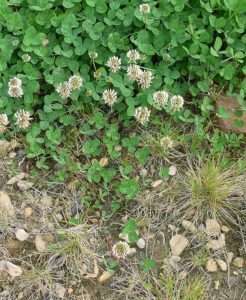 Red Clover (Trifolium pratense) and White Clover (Trifolium repens)
Red Clover (Trifolium pratense) and White Clover (Trifolium repens)
These two plants are so ubiquitous that it’s easy to assume they’ve always been here. White clover is especially common in lawns, and red clover will pop up in just about any disturbed sunny spot. Both are native to Europe and Asia, and red clover additionally may be found in North Africa. However, both species have been widely introduced elsewhere.
While neither is considered particularly invasive, they can take over large areas of disturbed land. They are deliberately sown for cover crops and livestock forage, so they’re not likely to go away any time soon.
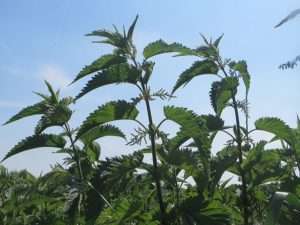 Stinging Nettle (Urtica dioica)
Stinging Nettle (Urtica dioica)
This is one of the most popular spring plants for foragers; chemicals that cause irritation can be removed through soaking the plants in water or cooking them. Although stinging nettle grows well in large areas of the United States, Mexico, and southern and western Canada, it is actually native to northern Africa, Europe, and Asia.
Stinging nettle makes itself at home in forested settings in particular. While it doesn’t create the same sorts of monocultures that, say, Himalayan blackberry does, it can shade out smaller plants with its broad leaves.
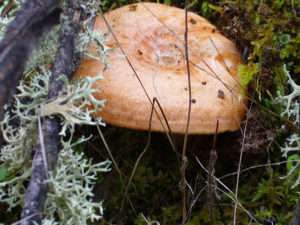 Saffron Milkcap (Lactarius deliciosus)
Saffron Milkcap (Lactarius deliciosus)
People don’t often think of fungi when it comes to non-native and invasive species, and yet there are fungi that have been moved around to new areas, often with their partner plants. Some are tiny soil fungi, but there are those that produce visible fruiting bodies. The edible saffron milkcap is one of these. It is mycorrhizal with pine trees in its native Europe, and managed to form connections with pines in North America as well.
As saffron milkcap does not cause any known diseases of plants, it is not considered an invasive species in the way that chestnut blight (Cryphonectria parasitica) is. While the mycelium of saffron milkcap may certainly compete for some of the same soil nutrients as native species in the same area, it has not become aggressive enough to displace native fungi.
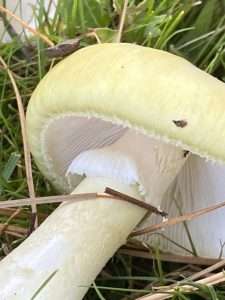 Death Cap (Amanita phalloides)
Death Cap (Amanita phalloides)
There are large, white Amanita species native to North America, like A. ocreata and A. bisporigera, both known colloquially as “destroying angels.” The death cap, however, is native to Europe. It has been spreading through parts of the United States, particularly along all the coastlines, and may sometimes be yellow-tinted. Its close cousin, the European destroying angel (A. virosa), has made a few appearances in New England and southern Quebec according to iNaturalist’s map of research-grade observations.
While these invasive Amanitas do not cause widespread ecological damage, they are considered invasive due to their extreme lethality. One cap is sufficient to kill a healthy adult human being.
